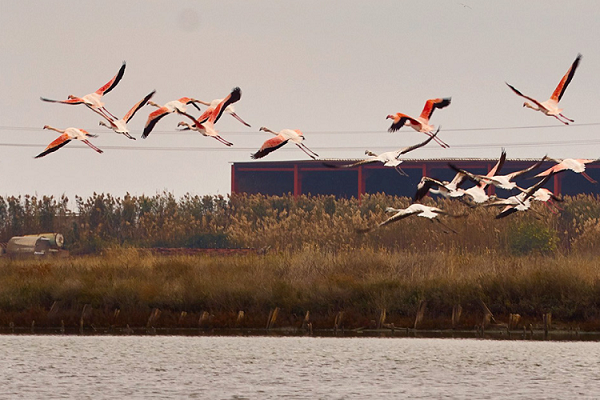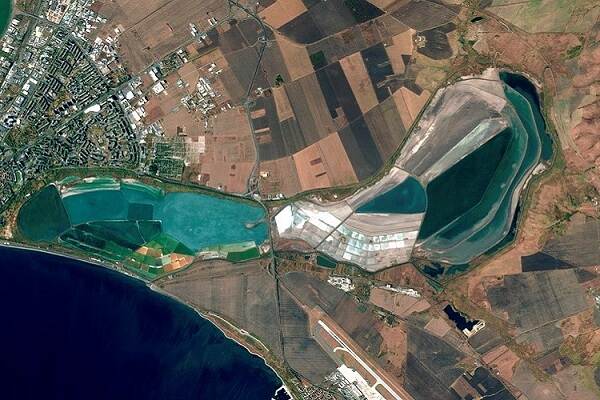First pink flamingos hatched in Bulgaria
The largest pink flamingo colony is located in the Atanasovsko Lake nature reserve and counts some 3500 birds.

For the first time in Bulgaria, three pink flamingo chicks were hatched in Atanasovsko Lake near Burgas, reported BTA news agency last week. The news was shared by Petar Yankov ornithologist from the Bulgarian Society for Protection of Birds (BSPB). The announcement came as the Atanasovsko Lake reserve celebrated its 44th anniversary. An event on the occasion of the anniversary was co-organized by BSPB, the Bulgarian Foundation Biodiversity and the Regional Environment and Water Inspectorate in Burgas.
The little ones
Dr Yankov told more about the BSPB monitoring of the flamingos. The monitoring started on June 16th when the chicks were about a week old. "They were scampering about the adults in the colony of some 45 nests," he said. “The monitoring is done from a distance, via binoculars. Most colony members nest on the ground and human presence forces the parents to abandon their nest or even to leave the colony. That puts the eggs to risk because they can be eaten by seagulls”. The colony nested for the first time in July 2023, but due to the late stage of the season, birds were not able to hatch.
The pink colony
Dr Yankov commented that the hatching of the three chicks is a sign that Atanasovsko Lake is perceived by the birds as a safe home and flamingos nest only where the place is safe. Pink flamingos have been inhabiting the area for eight years now but only now they found it to be safe enough to raise their next generation. It is estimated that Atanasovsko Lake is home to some 3500 flamingos – largest colony in the country.
Atanasovsko Lake – biodiversity oasis on the Black sea coast
Atanasovsko Lake is a salt coastal lake north of Burgas, Bulgaria, located in direct proximity to the Black Sea. The lake is about 5 km long and divided in two by a strip of sand in the middle. The lake is particularly known for the diversity of its flora and fauna and is surrounded by swamps and canals that drain the whole local basin into the sea.
Due to the high salt content, that increases every year because of its link with the sea, salt has been produced in it since 1906, with 40 000 tons of sea salt produced a year. The lake's north part, a nature reserve since 1980, is connected by a canal to the Black Sea, while the smaller south part, which is mostly used for salt production, serves as a buffer zone for the reserve. A road connecting Varna with Burgas passes through the sand strip in the middle of the lake.

The lake is home to over 230 species of vascular plants, of which 7 are endangered in Bulgaria. It is also inhabited by the Etruscan pygmy shrew, the smallest mammal by mass. Lake Atanasovsko is one of the key ornithological locations in the country, with 314 species of birds being present, 70% of all bird species in Bulgaria. Twelve of them are globally endangered, including the pygmy cormorant, the red-breasted goose, the ferruginous duck, the Dalmatian pelican and the corn crake. Seventeen local species of birds in danger of extinction in Bulgaria also live in the lake, including the common tern and Audouin's gull. The high number of birds is due to the lake's location on the important Via Pontica bird migration route. The bird population is highest during the autumn migration.